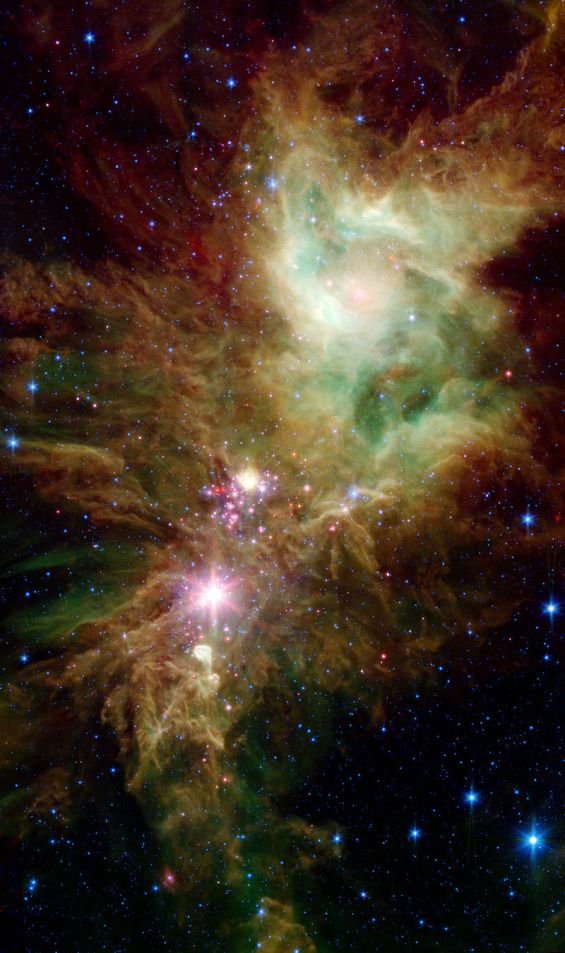In case you haven’t read about it yet, NASA have decommissioned their Spitzer Space Telescope today.
The Spitzer Space Telescope (SST) was an infrared observatory launched by NASA in 2003, and was part of NASA’s Great Observatories Program. The telescope was built to be used for 5 years, and most parts of it did only last that long. However the SST has continued to be used for an additional 11 years, as parts of the Infrared Array Camera still worked.
Some of the amazing pictures captured by Spitzer
You’ll probably recognise a fair few of Spitzer’s images, such as the Helix nebula, a planetary nebula known for distinct cometary knots and a top target for amateur astronomers!

Or maybe you’ll recognise the ever-festive NGC 2264 from a previous post. In optical light, you miss out on a gorgeous star cluster, known as the snowflake cluster, and the stellar nursery inside the dust.

That is still one of my favourite images of space. Thanks Spitzer!
Below are more of Spitzer’s images. You can check out all of them on NASA’s official site.
A bit more background on Spitzer
Spitzer was a part of four telescopes, designed for multi wavelength observation. Its sibling telescopes are Hubble (optical light, active), The Compton Gamma-Ray Observatory (deorbited in 2000), and The Chandra X-ray observatory (active).
The Observatory was made up of the Infrared Array Camera, an Infrared Spectrometer, and MIPS, a collection of three detectors. The SST could see space between 3.6 to 160 micrometres, a really large band of light considering Spitzer sees 333 times more wavelengths of light than humans (unless you’re a tetrachromatid.)
A last thank you to Spitzer
I am so surprised to see the SST being decommissioned so abruptly. Space telescopes are difficult to fund and maintain, yet they’re worth every penny in my eyes. Without Spitzer, we wouldn’t have this much information on exoplanets, planetary nebula, galaxies, star clusters, brown dwarfs, and the cosmos itself! It’s amazing to see the power one little spacecraft has.
So thank you Spitzer, and thank you NASA.
All images taken from The SST’s official mission site. Credit: NASA/SST




[…] And lastly, but not leastly, Fran from My Hubble Abode pays tribute to the Spitzer Space Telescope, recently decommissioned by NASA. Click here for that. […]
LikeLike
It’s a real shame they’ve had to take down two of the observatories. We’re always improving our technology, so it just means something even better will be sent up in time 🙂
LikeLiked by 1 person